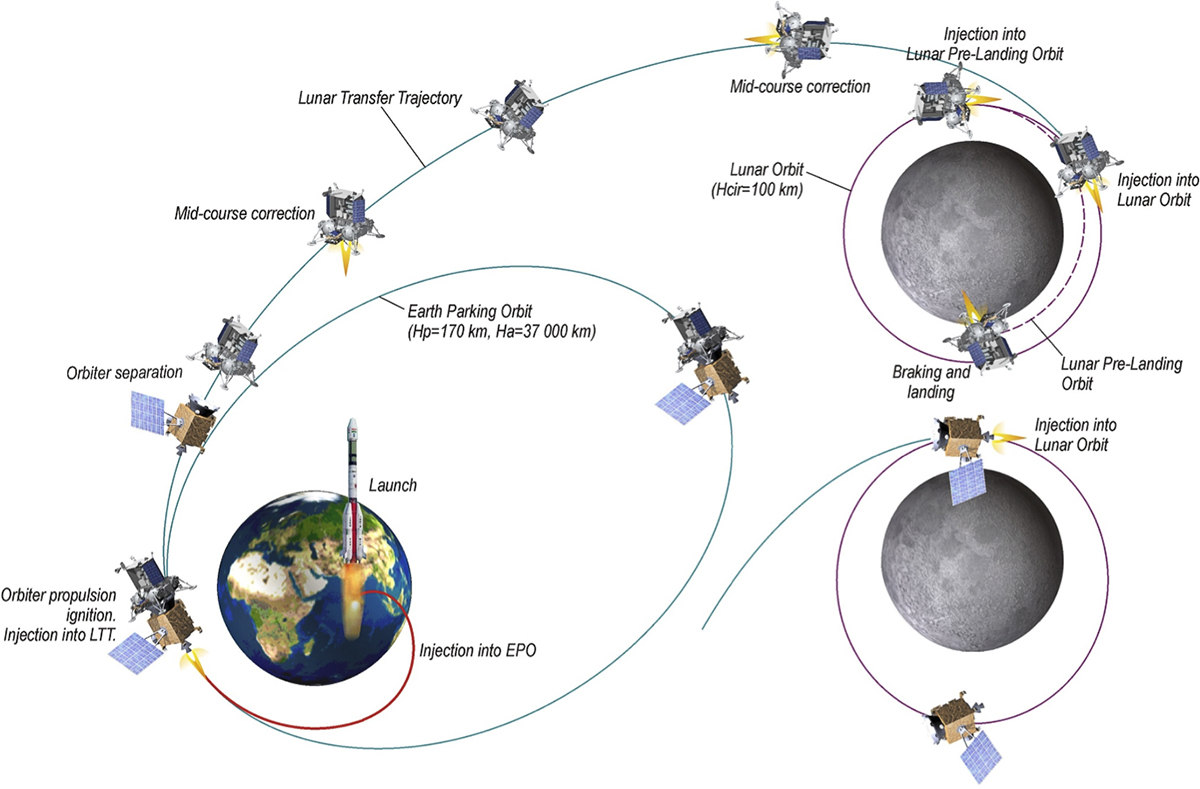Mission
The Luna-Resurs mission (also named Luna-27 mission) is part of the lunar mission programme by the Roscosmos with collaboration by the European Space Agency (ESA). The lunar mission programme includes a series of flights to the lunar south pole. The first mission, Luna-25 (Luna Glob) is planned for launch in July 2022, followed by Luna-26 one year later and Luna-27 (Luna Resurs) in 2025, and further missions beyond.
The Luna-Resurs mission is a planned lunar lander mission. Aim of the mission is to send a lander (Luna-Resurs 1 lander or Luna-Resource-1 lander) to the South Pole–Aitken basin, an area on the far side of the Moon. Its objective will be to detect and characterise lunar polar volatiles. The purpose of the mission is to prospect for minerals, volatiles (nitrogen, water, carbon dioxide, ammonia, hydrogen, methane and sulfur dioxide, and lunar water ice) in permanently shadowed areas of the Moon and investigate the potential use of these natural lunar resources.
The University of Bern participates in the LASMA instrument and contributes the Neutral Gas Mass Spectrometer (NGMS) to the Gas Chromatography Mass Spectrometer (GC-MS) package.
You find more information about the lunar mission programme on our website dedicted to the Luna-LASMA-LR instrument, which is part of both missions, Luna-Glob and Luna Resurs, as well as on the Russian space web Luna-Glob and Luna-Resurs and on the ESA Homepage.

